Pushing past the pain: Getting Lawson Craddock through the Tour de France
How EF Education First-Drapac's riders, doctors and directors have contributed to American's remarkable ride
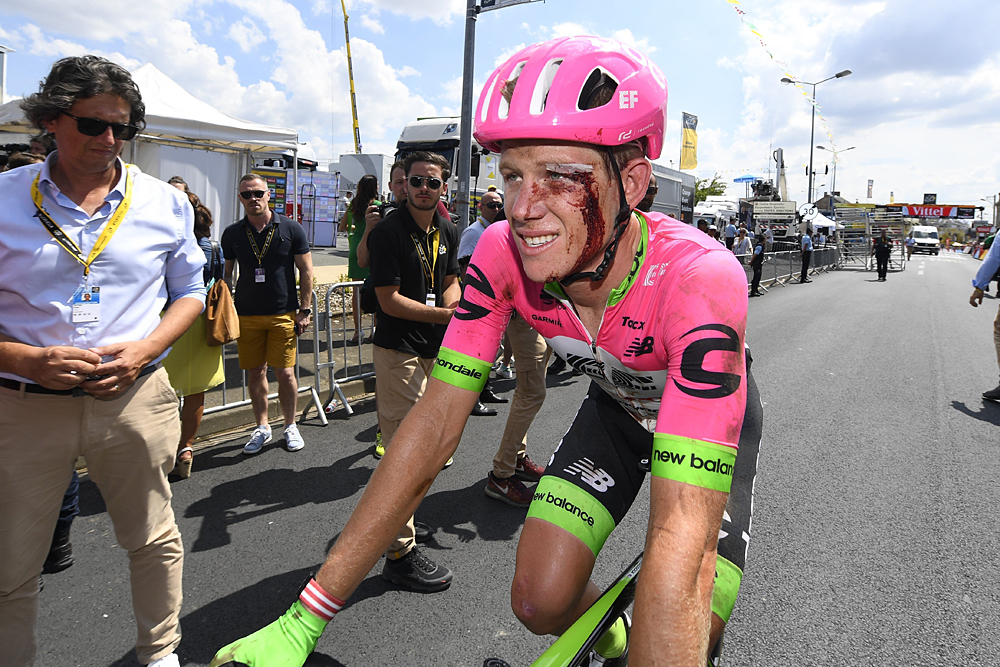
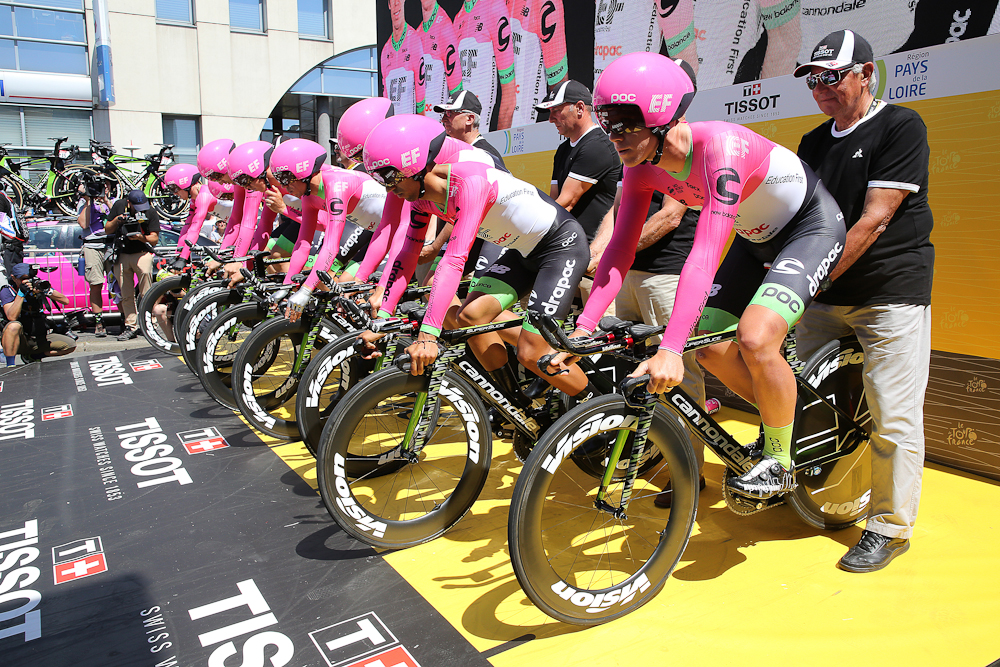
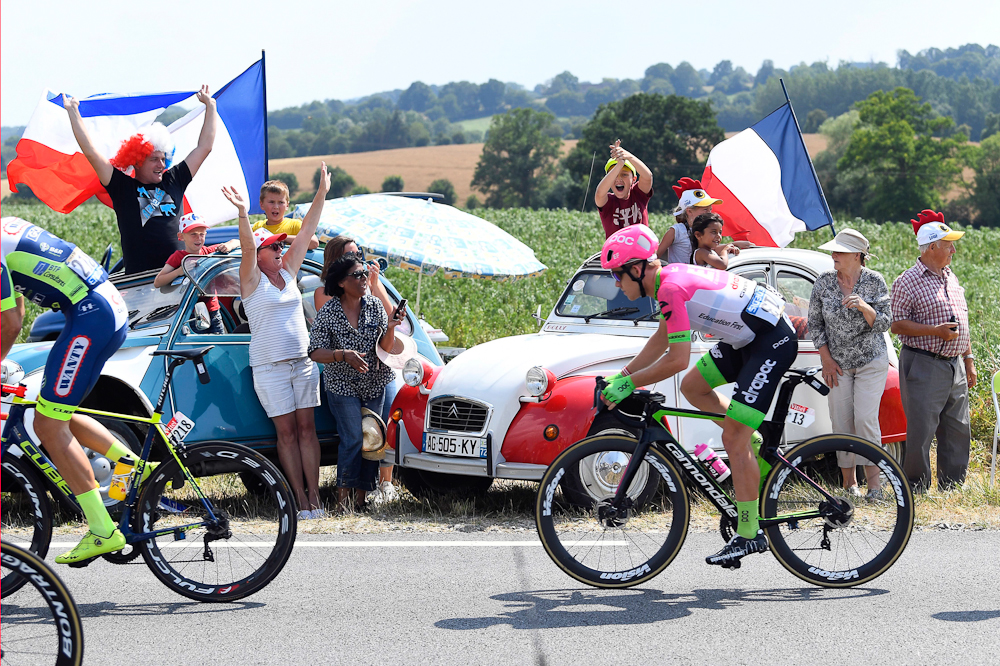
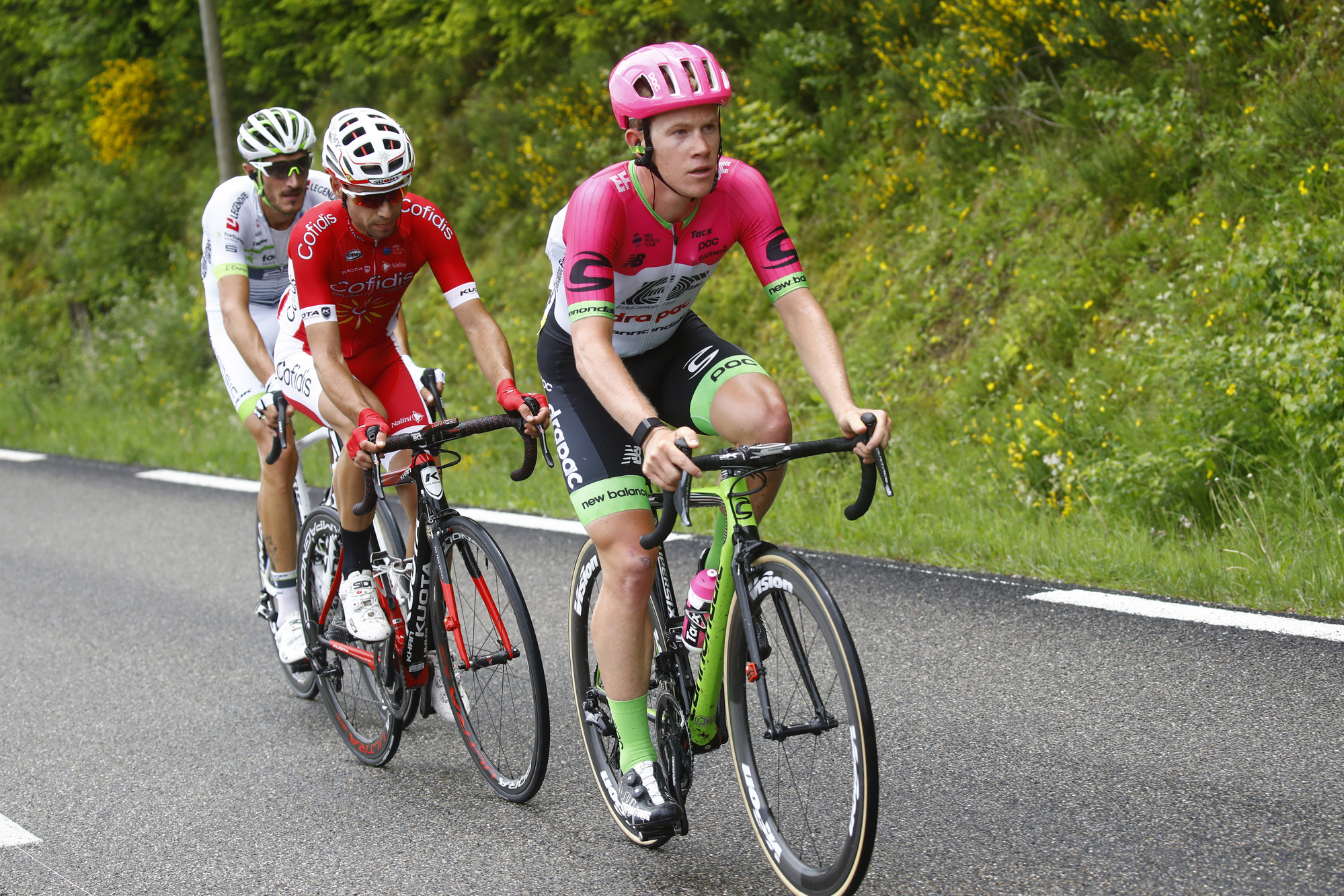
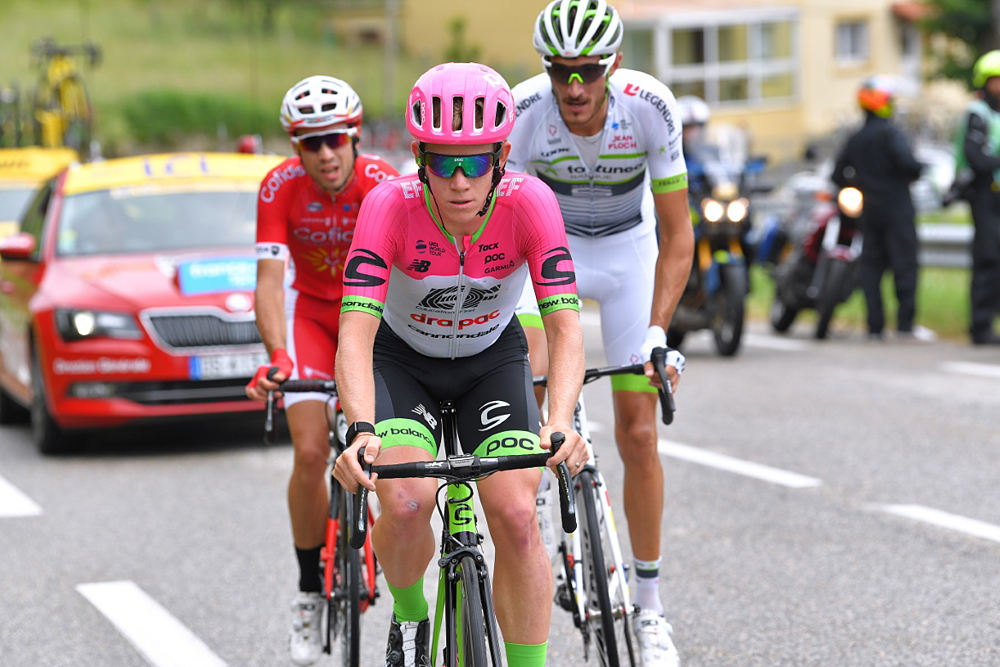
"I'm not a hero, no no no.”
Lawson Craddock may not have invited the attention, but it's not going away. Each morning and afternoon a new throng of television cameras gather outside the EF Education First-Drapac team bus, eager to put some words to the grimaces, to tell one of the stories of the 2018 Tour de France.
It's a story we know well – there's just a different character in the lead role. Stretching back to its very beginnings, the tapestry of La Grande Boucle has been coloured by tales of suffering, of perseverance, of – as much as Craddock might protest – heroism. We're told as children that when it comes to sport, it's the taking part that counts, and with the Tour de France the notion that simply reaching Paris is an achievement in itself, worthy of a sort of unconditional respect, still endures.
In case you’ve somehow missed it, Lawson Craddock fractured his left scapula – his shoulder bone – and suffered a laceration above his eye in a crash on the opening stage. He got up and finished the stage with blood encrusted on his face. He has since persevered, barely able to support himself on the bike, finishing dead last most days. On Sunday came his biggest challenge, on the cobblestones of Paris-Roubaix, but he made it through. He may be the lanterne rouge – in last place overall – but he's still in the Tour.
Craddock is hopeful he can continue to recover and put in some shifts for Rigoberto Urán in the second half of the race, but he’s also now riding for a cause beyond himself and his teammates. The night of the crash, he pledged to donate $100 for every stage he completed to the Alkek Velodrome in his native Houston, Texas, which was damaged by Hurricane Harvey last year. That now stands at $800, but donations from the general public have now reached a staggering $93,000.
"The guys who are working on me and the people that are donating to the good cause for the velodrome, they're the heroes, not me," Craddock added. "I just get inspiration from them."
With that, Cyclingnews takes a look at the efforts that have gone into getting Craddock through.
Get The Leadout Newsletter
The latest race content, interviews, features, reviews and expert buying guides, direct to your inbox!
Safety first
The question that often accompanies these feats is at what point bravery spills over into foolishness, and to what extent we should glorify suffering. Riding for six hours a day in the most intense bike race in the world is no one's idea of an optimal way to heal an injury, after all.
Kevin Sprouse is the Medical Director at EF Education First-Drapac, and he gave the first assessment of Craddock’s injuries in the medical truck, before making the call on whether he could and should remain in the race.
"From a medical standpoint, there's lot of misunderstanding regarding his injury," Sprouse says. "The fracture is not in the body of the scapula, it’s in the spine of it, which is a bony prominence that sort of sticks out from the scapula. It's a crack, it's not displaced, and there’s no compromise to the structural integrity of the bone or joint, so he's not doing any damage by riding on it.
"Once we've established he's safe to ride and he's not a danger to himself or anyone around him, then we can look at how we are going to get him through it. If there was ever an issue of safety, that's where the line would be drawn."
Massage table
Matt Rabin is a chiropractor at EF-Drapac. He is the first person Craddock sees in the morning and it's his hands that dig into Craddock's shoulder before and after every stage. The pain is often greater than he'll feel on the bike all day.
"The thing that's really causing the pain is all the soft tissue injury around the fracture," Rabin explains. "The fracture's obviously painful, but imagine if you fall with enough force to break bone, there's going to be significant soft tissue injury around it. Then the body goes a bit crazy, those muscles go into spasm and everything becomes very painful. We’re not going to change the speed at which a fracture heals but we can offload the muscle tension in and around the shoulder enough to give him less pain each day.
"It's kind of like a three-step process. It starts back at the hotel, we work on loosening up the stiff muscles, releasing some tension, and working on his mobility to decrease the pain. Then the next morning, first thing, usually before breakfast, we just work on some mobility stuff to encourage normal function because overnight it tries to stiffen up. Then usually just before the start of the stage we’ll spend another 15 minutes getting the muscles he’ll be using activated.”
Rabin explains that the shoulder doesn't work in isolation and, given Craddock doesn't have full function in it, there are going to be compensations elsewhere in the body.
"It's basically an evolving picture. The body is a moving target. Things change in 12-hour increments, if not faster. Now it's making sure his pelvis stays intact, and he's getting some pain under his foot, and all these little things that creep up that you have to try and knock on the head as quickly as possible."
Medication
As well as the sessions on the massage table, Craddock is also taking medication to try and numb the pain. Sprouse is in charge of administering all medication at the team and explained that Craddock is taking a combination of paracetamol and ibuprofen – two over-the-counter painkillers – two or three times a day.
"Normally a dose of ibuprofen is about 400mg, and paracetamol anywhere from 500mg to 1g. It varies, whether it's during the stage, after, or to help sleep. We aim to use the minimal effective dose. Even though they’re fairly benign medications, they have an effect on the liver and kidneys. It's two to three times a day, so still well below the maximum dosages."
When it comes to professional cycling and the issue of medication and painkilling, alarm bells understandably start to ring. Many drugs are, of course, banned, but even so there are strong opiate-based painkillers such as tramadol that are permitted but nevertheless the source of much controversy.
"Lawson has been taking paracetamol and ibuprofen, but nothing stronger than that," says Sprouse. "The way I look at it, medications stronger than that, they have a place but not in the pro peloton, because they tend to dull reaction time and cause dizziness, and you don't want someone on those medications – be it tramadol or hydrocodone – in a race situation.
"Say it was a leg fracture, and they're out-of-competition, for sure, they're good medications in the right scenario, but we never use those type of pain medications in-competition. The other thing is that the combination of paracetamol and ibuprofen, from a pain relief standpoint, is just as effective as some of those lower level opiates, so there’s really no need to use those things. If he needed stronger medications he’d be out of the race."
Mental health
One thing Sprouse is keen to stress is Craddock's mental health. The physical injuries are plain to see, but with them comes a psychological component that mustn't be neglected.
"With everything he's put into this race, and his desire to continue, we want to help him do that, if it's reasonable to," he says. "A lot of it is one making sure he’s in a good place to make the decision to continue, that he's not feeling pressured. I'm very comfortable with that, because I know that from a team admin standpoint, from the medical staff, from everyone, there's no pressure on Lawson.
"Also it's a about evaluating day-by-day. When he got this diagnosis, there was the thought, 'it's over – my shoulder’s broken'. My guidance since then to him has been take it hour-by-hour, let's see how you progress, don't make your decisions quickly."
Going back to establishing, as a base, that his injuries cannot get any worse, Rabin explains that Craddock can be 'empowered' psychologically to absorb the physical pain.
"When people have significant pain, their brain goes into a mode whereby they think ‘stop’ – that's what the brain is trying to get them to do," Rabin says. "Getting him to understand that the discomfort that he is getting on the bike doesn’t necessarily equal damage – understanding that pain doesn't necessarily equal damage – is a big leap. By almost empowering him with the information, it has eased that mental strain."
Of course, the charity cause provides a huge psychological boost, as well, as Craddock has himself acknowledged. Each donation is almost a painkiller in itself, giving him the added motivation to dig that bit deeper.
Team spirit
Spouse and Rabin largely work with Craddock in the morning and evenings, but for five or six hours a day he must ride his bike. While many of the photos will show Craddock off the back on his own, getting him through the day is still very much a team effort.
Tom Southam is a directeur sportif at EF Education First-Drapac, and calls the shots from the team car.
"The first thing we had to do as a team is agree that we were going to get him through, in terms of we haven’t asked him to contribute to the team at all since he’s been injured. First of all, the riders have to agree to this because they’re covering the work he’d normally be doing. Obviously, they’re all fine with it," Southam says.
"During the race, for the first few days, we’ve been really conscious of the time cut. A couple of times he might have been dropped really early, and on those flat stages the cut is only eight per cent, so if you’re dropped 50km from finish, alone, you’re in trouble. We paid a lot of attention to that and made sure he has known every day where he’s safe from."
During the early days, Craddock could barely brake without wincing, but his teammates rallied around him. They had Urán to keep safe but one-by-one they’d drop back to check on Craddock, offer some words of encouragement, and even help him eat and drink.
"You have to be encouraging but also realistic because there’s no point saying meaningless encouraging things when it’s hurting like hell," says Southam. "So we try and keep him in mind of what’s going on, keep thinking about real things instead of airy-fairy stuff."
Craddock has been inspired by his teammates, but he has also inspired them. If they were impressed by his resilience in simply getting through the first two days, they were gob smacked by what happened in the stage 3 team time trial. The team went through various scenarios of how to position Craddock in order to help him make the time cut, but he didn’t just hang on, he took turns, and was only dropped inside the final three kilometres.
"All the recognition goes to Craddock," said Urán after the stage. "These are the things that, as a leader, you really value."
For Simon Clarke, the team's road captain and Craddock's roommate, "words can't describe it."
Hell of the North
While Craddock's situation was seemingly improving throughout the opening week, there was something of an Everest looming in the form of Sunday's stage to Roubaix. If it hurt on the tarmac, the cobblestones of northern France were going to be something else.
However, Craddock, again, got through. For the first couple of hours he was a constant sight at the back of the bunch, calmly ticking off the early pavé sectors and neatly sidestepping those who had crashed or punctured up ahead. When the race ignited, however, he had to wave goodbye, though he did manage to complete the stage in a large gruppetto.
"Tough is an understatement," he said outside the team bus.
Reaching the finish seemed like a victory in itself, but there was disappointment, too.
"The plan was for me to contribute for the first 50km. Unfortunately, that didn't work out," he said. "For me mentally, it's just the fact that I couldn't really help the team out today. I really started to get into the mindset this morning of being prepared to fight and really help the team out as much I could but unfortunately the nerves got the better of me today and for me it just ended being survival.
"Really, that was just me trying to find the safest position. My nerves are definitely not quite where they were before I crashed. The comfort level, fighting for position, it's still coming back. It's gotten a lot better every day, but with the cobblestones and just the threat of constant danger was a bit stressful for me."
Craddock has more than earnt his rest day, and he can now start thinking about the second half of the race. Paris seems a very realistic prospect now, as do sparkling new facilities at the Alkek Velodrome, but Craddock still has unfinished business.
"I'm really encouraged by the fact that we made it this far, and I expect myself to rebound a little bit and start helping out,” he said. “Which is why I came here."
Patrick is a freelance sports writer and editor. He’s an NCTJ-accredited journalist with a bachelor’s degree in modern languages (French and Spanish). Patrick worked full-time at Cyclingnews for eight years between 2015 and 2023, latterly as Deputy Editor.
